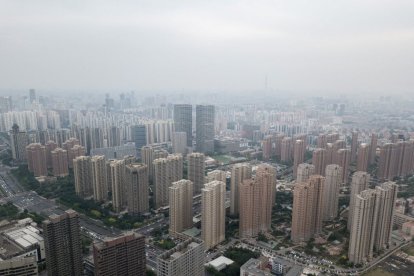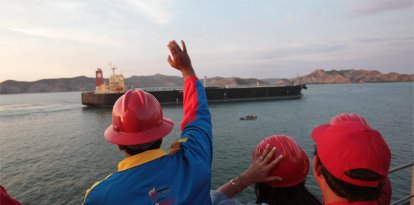Research reveals that large Chinese cities are sinking
The study, based on satellite data, discovered that 45% of cities experience a soil decrease of more than 3 millimeters per year.

Tianjin, China (Fred Dufour / AFP)
A study based on satellite data revealed that major cities in China are experiencing “moderate to severe” levels of subsidence, which is putting millions of people at risk.
After systematically assessing the soils of China’s 82 major cities between 2015 and 2022, a group of scientists discovered that 45% of cities in which 29% of the population is concentrated (270 million people) are sinking at more than 3 millimeters per year.
Meanwhile, 16% of cities with 7% of the population (67 million people) are sinking even faster, with subsidence of more than 10 millimeters per year, with the most affected places being Beijing and Tianjin.
This phenomenon is attributed to several factors, such as the extraction of groundwater and the weight of the buildings built.
“It is a problem of urbanization and population growth - larger population density, more water extracted, more subsidence,” said Matt Wei, a geophysics expert at the University of Rhode Island.
Last year, 3,000 residents were evacuated from Tianjin after a “sudden geological disaster” that researchers attributed to water depletion and the drilling of geothermal wells.
“This is for China a national problem and not a problem in just one or two places,” said Robert Nicholls of the Tyndall Center for Climate Change Research at the University of East Anglia.
Shengli Tao, co-author of the study and professor at Peking University, explained to CNN that China is already addressing this problem by applying various measures, including implementing strict laws to control groundwater pumping.
In addition, China has been bringing water from the Yangtze River in the south of the country to the north, including Beijing, which has suffered from water shortages.
Annual economic losses due to sinking in China already exceed 7.5 billion yuan (approximately $1.04 billion). Furthermore, it is projected that within the next century, almost a quarter of coastal land could be below sea level.
Not just China’s problem
A study published in February indicated that around 6.3 million square kilometers of land worldwide were at risk. Indonesia is among the worst affected countries, with much of the capital, Jakarta, now below sea level.
Nicholls suggests learning from Tokyo to address this challenge, which managed to stop its sinking by banning groundwater extraction in the 1970s. “Subsidence mitigation should be looked at very seriously, but you can’t stop all of it, so you are talking about adaptation and building dykes,” he said.
RECOMMENDATION





















